
Exhibits
The permanent exhibitions at Asuka Historical Museum are mainly composed of the structural remains and artifacts excavated by the NNRICP. In addition, several times a year, special exhibitions and feature exhibitions are held with various themes.
Lobby Exhibition
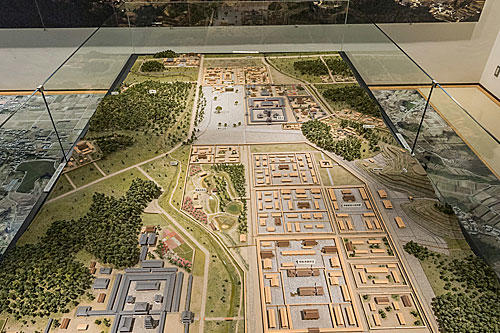
Upon entering the lobby, the visitor will view a fountain of the Asuka Period and a male/female stone carving.. In addition, a miniature of the Asuka region reconstructed to 1:500 scale and an aerial photograph of the region will begin to whet the imagination about Asuka in Ancient and Contemporary Periods.
Exhibition Room 1
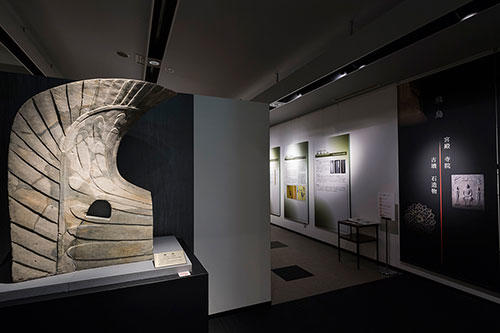
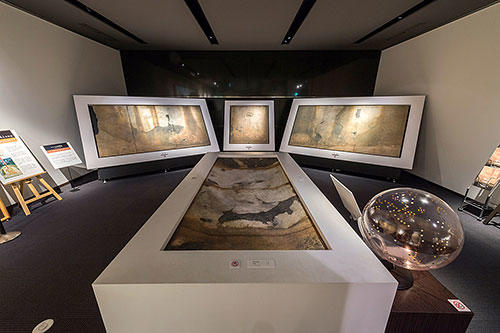
In the First Exhibition Hall, the history and culture of Asuka from the 6th century, when Buddhism was brought in Japan, to the early 8th century when the state capital was transferred to Nara, are explained through archaeological and fine art materials, photo panels, miniature models, etc. The main exhibits include the stone works of the 7th century such as the Mt. Sumeru Stone, and artifacts excavated from archaeological sites such as burial mounds and Buddhist temples. In addition, detailed explanations are provided with regard to a model of the features of the Mizuochi Site, where a water clock was installed for the first time in Japan, and the Takamatsuzuka and Kitora Burial Mounds in which richly colored murals were found. These two examples constitute the every and only colored murals that have been discovered throughout Japan, and Asuka-dera Temple, the first Buddhist temple constructed in Japan.
Exhibition Room 2
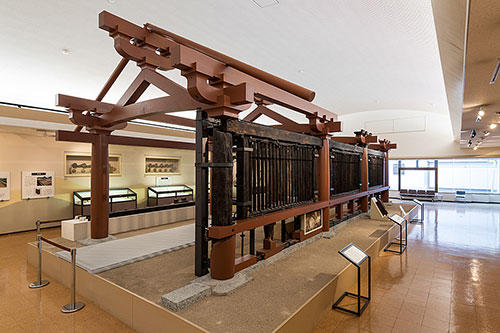
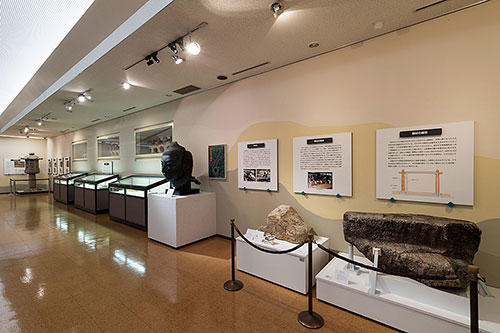
Opened in 1997, the Second Exhibition Hall focuses on Yamada-dera Temple, the representative ancient Buddhist temple of 7th century Japan. During an excavation in 1982, the East Corridor of Yamada-dera Temple was found buried in the same state as when it fell to the ground. The East Corridor is historical material of ancient architecture older than Horyu-ji Temple, regarded as the world's oldest wooden building in existence, and was designated as an important cultural property due to its significance. In the Second Exhibition Hall, the East Corridor of Yamada-dera Temple has been restored using actual components that remained in the best condition, in order to present the architectural structure and scale of the corridor at that time so that visitors can easily grasp them at a glance.
Furthermore, in the Video Corner, visitors can enjoy watching videos that focus on historical and cultural views of Asuka, as well as rare scenes of the excavation at the Takamatsuzuka Burial Mound.

 About
About ページトップ
ページトップ

 ご利用案内・交通アクセス
ご利用案内・交通アクセス